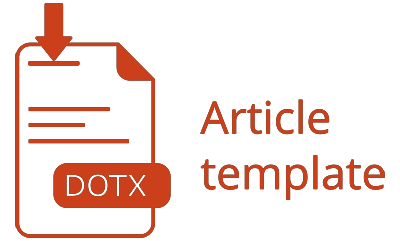FORMATION OF CORRUPTION ERADICATION COMISSION
Abstract
Since the establishment of the Corruption Eradication Commission (KPK) in 2002, corruption eradication agency in Indonesia is authorized to a three sections), namely police agency, prosecutor’s office and KPK. Among the three institutions, the KPK has an extraordinary authority, which is not granted to the police agency or the prosecutor's office by the legislators. The authority includes the authority to take over the investigation of criminal act of corruption being perpetrated by the police officers or the prosecutors. In time police institution or prosecutor's office begins a graft investigation of a criminal act of corruption, it shall be reported to KPK within a period of time no later than 14 working days and shall continuously be coordinated with the KPK. Even if at the same time the police, prosecutors, and KPK are investigating the same corruption, the involvement of the police or the prosecutors must be discontinued immediately. With regard to this fact, this paper reviews descriptively what and how exactly KPK with its extraordinary authority was originally formed. This paper uses secondary data in the form of literature and minutes of the meeting on the establishment of law on KPK in the House of Representatives of the Republic of Indonesia (DPR-RI). The result of the study shows that the establishment of the KPK according to Law No. 30 of 2002 was designed to form an independent and super-agency of corruption eradication, with some authorities previously never granted to the police or the prosecutors, but by not eliminating the authority of the police and prosecutors as a part of corruption eradication institutions that have been already existed. In such a position, KPK functioned as a trigger mechanism holder over the police and prosecutors who are considered do not effectively and efficiently execute the action of eradication on corruption.References
Corrado, G., & Rossetti, F. (2018). Public corruption: A study across regions in Italy. Journal of Policy Modeling.
Gamba, A., Immordino, G., & Piccolo, S. (2018). Corruption, organized crime and the bright side of subversion of law. Journal of Public Economics, 159(February 2017), 79–88.
Gans-Morse, J., Borges, M., Makarin, A., Mannah-Blankson, T., Nickow, A., & Zhang, D. (2018). Reducing bureaucratic corruption: Interdisciplinary perspectives on what works. World Development, 105, 171–188.
Huang, F., Chen, X., & Wang, L. (2018). Evolution of cooperation in a hierarchical society with corruption control. Journal of Theoretical Biology, 449, 60–72.
Isra, S., Yuliandri, Amsari, F., & Tegnan, H. (2017). Obstruction of justice in the effort to eradicate corruption in Indonesia. International Journal of Law, Crime and Justice, 51, 72–83.
Joseph Joseph, C., Gunawan, J., Sawani, Y., Rahmat, M., Avelind Noyem, J., & Darus, F. (2016). A comparative study of anti-corruption practice disclosure among Malaysian and Indonesian Corporate Social Responsibility (CSR) best practice companies. Journal of Cleaner Production, 112, 2896–2906.
Lilik Mulyadi, Tindak Pidana Korupsi Di Indonesia, Normatif, Teoritis, Praktis Dan Masalahnya, Published by Alumni, Bandung, First Edition, First Print, 2007, p. 7 and 13.
López-Valcárcel, B. G., Jiménez, J. L., & Perdiguero, J. (2017). Danger: Local corruption is contagious! Journal of Policy Modeling, 39(5), 790–808.
The Consideration of Law Number 28 Year 1999.
Law Number 28 Year 1999.
See Government Regulation Number 19 Year 2000.
Romli Atmasasmita, Sekitar Masalah Korupsi Aspek Nasional dan Aspek Internasional, Published by CV. Mandar Maju, Bandung, Edition I, 2004, p. 14-15.
Ibid., 15.
The Consideration of Law Number 30 Year 2002.
Ibid., p. 30-31.
Ibid., p. 31.
Minutes of the 20th Plenary Session of the House of Representatives of the Second Session Period of 2002-2003, pp. 12.
See the Minutes of the 20th Plenary Session of the House of Representatives, Session II of the 2002-2003 Session Year, p. 13-15.
Presidential Decree Number 228 of 1967 Date 2 December 1967.
Presidential Decree No. 12 of 1970 Date January 31, 1970.
Presidential Instruction No. 9/1977 On September 5, 1977.
Ibid., p. 3-4.
Ryvkin, D., & Serra, D. (2018). Corruption and competition among bureaucrats: An experimental study. Journal of Economic Behavior and Organization, (2018).
Tierney, W. G., & Sabharwal, N. S. (2017). Academic corruption: Culture and trust in Indian higher education. International Journal of Educational Development, 55(May 2016), 30–40.
Zakharov, N. (2017). Does Corruption Hinder Investment ? Evidence from Russian Regions. European Journal of Political Economy, (33).
This journal provides immediate open access to its content on the principle that making research freely available to the public supports a greater global exchange of knowledge.
All articles published Open Access will be immediately and permanently free for everyone to read and download. We are continuously working with our author communities to select the best choice of license options, currently being defined for this journal as follows: Creative Commons-Non Ceomercial-Attribution-ShareAlike (CC BY-NC-SA)
 Abstract viewed = 153 times
Abstract viewed = 153 times
 PDF downloaded = 268 times
PDF downloaded = 268 times







